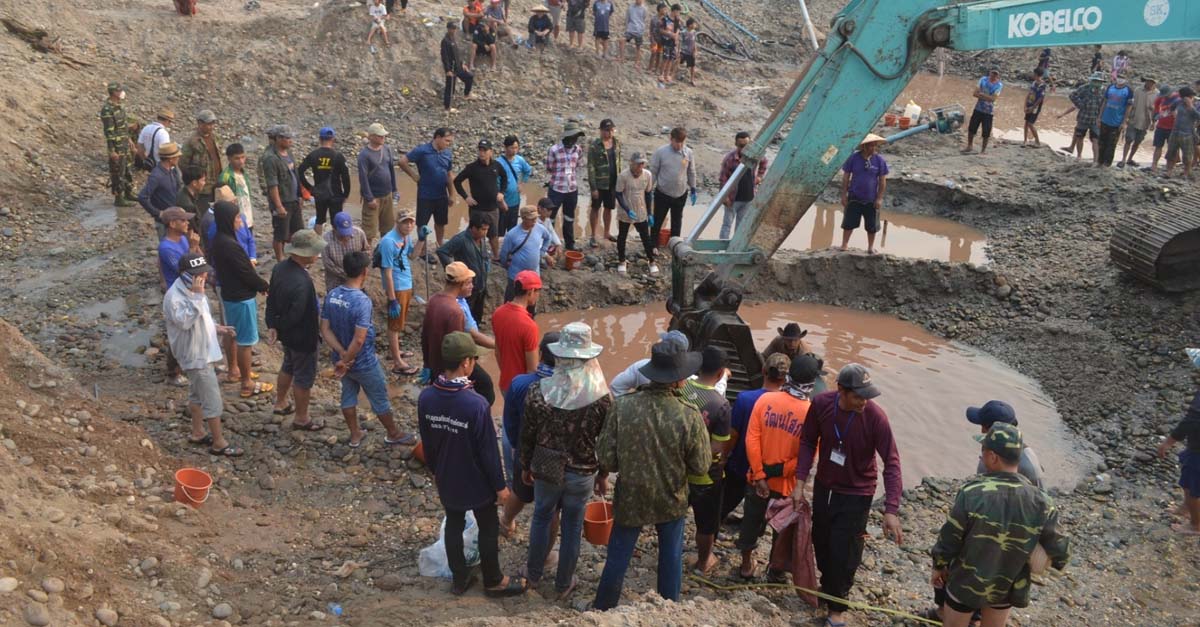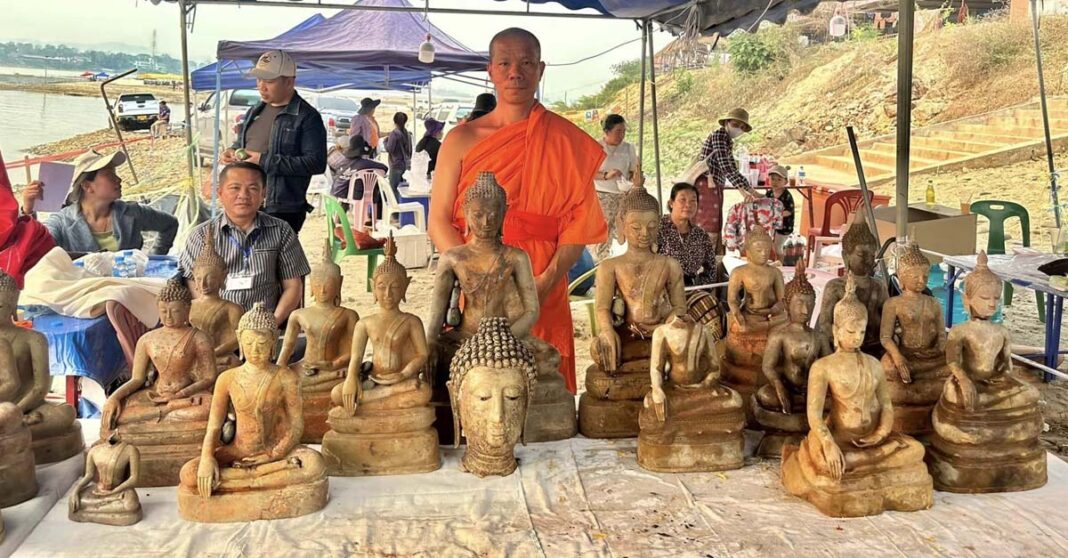In recent days, several ancient Buddha statues were retrieved from the Mekong River’s shore in Tonpheung district of Bokeo province. Believed by some to be remnants of a 14th to 16th century temple, the true historical context of these artifacts remains shrouded in mystery, awaiting further investigation.
Shortly after retrieval, the artifacts were transported to Thongthip Phatthanaram temple in Yaitonpheung village for safekeeping.
In the meantime, research on the site continued. On 15-19 March, provincial authorities, in collaboration with experts from the Heritage Department of the Ministry of Information, Culture, and Tourism, conducted further search for buried artifacts near Done Phuengkham island.
The search was prompted by a suggestion from the provincial administration office and the expert team, who deemed the area a likely hunting ground for such treasures.
The mission proved fruitful, a total of 38 Buddha statues, with sizes ranging from small (20-25 cm) to large (40-80 cm), were excavated, with ongoing investigation efforts planned.
One of the largest statues measures 80 cm tall, 56 cm wide at the shoulders, and has an overall width of 88 cm, as reported by the tourism office in Ton Pheung district.

The excavation efforts were spurred by a prior discovery on 11 March, when the provincial authorities found the head of a Buddha image and several small headless images during road repairs near Thongthip temple. The head was found in sand, once buried beneath the water of the Mekong River, used by the construction company for the road upgrade, prompting further exploration of the area.
As excavations continue, speculations among a prominent Lao social media page – and several Thai media – have arisen about the possibility of discovering a lost Buddha statue known as “Phra Souk.” Legend has it that “Phra Souk” was one of three sisters—Phra Souk, Phra Serm, and Phra Sai—built during the reign of King Setthathirath of the Lan Xang Kingdom, originally located in Vientiane Capital, from 1548 to 1571.
During the reign of Thailand’s third king, the three statues were being transported from Vientiane to Nong Khai, Thailand, via ship along the Mekong River. However, tragedy struck when a storm hit the vessel, causing “Phra Souk” to plunge into the river, where it has remained lost ever since.
Presently, Phra Sai resides in a temple in Thailand’s Nong Khai Province, while Phra Souk is housed in a temple in Bangkok.
While this marks a great discovery for Laos, some Thai Facebook users are raising concerns over the legitimacy of the findings as many cited the fresh and new state of the statues despite being buried beneath the water for hundreds of years.
“Wow, lost for 400-500 years, they said? Looks pretty new to me!” said a Thai Facebook user.
“Anyone can tell that these images aren’t 100 years old. They all look below 50 years old,” added another user.
However, some other users argued that the reason behind the buddha images looking new is attributed to the fact that they were not exposed to oxygen when buried underneath the river hence their coppers did not undergo the oxidation reaction, a process in which a chemical substance changes because of the addition of oxygen.
“Whoever said that the statues look new, please do your research. The process in which they were forged is unique and is no longer practiced in the modern day,” a Facebook user wrote.
Despite mixed reactions from the neighboring country, Lao authorities stated that Thai people who live on the other side of the river are allowed to cross to Laos to pay homage to the relics without going through any document processes.
Meanwhile, efforts to uncover more artifacts continue, with the hope of revealing further insights into the region’s old days.



